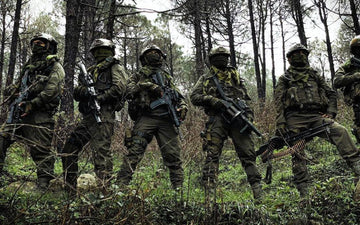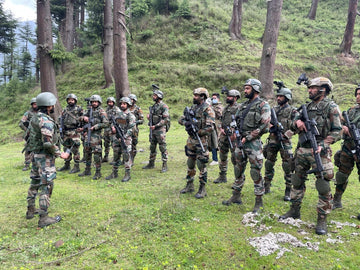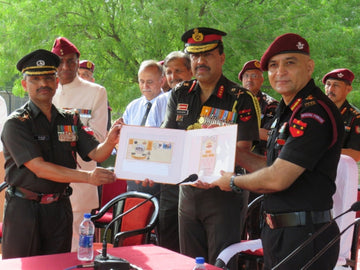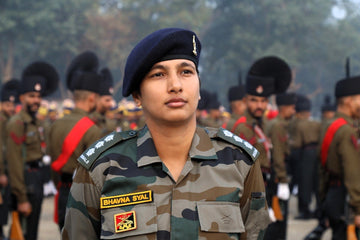The Indian Army stands tall as one of the largest military forces in the world, known for its discipline, operational readiness, and rich legacy. Within this esteemed institution, the position of Subedar Major (SM) holds significant importance. Subedar Majors are pivotal in shaping the ethos and functionality of military units, commanding immense respect from both officers and enlisted personnel. They possess a unique blend of leadership capabilities, administrative acumen, and tactical insight. This article delves into the multifaceted role of the Subedar Major, exploring their powers, duties, and overall impact in the Indian Army.
Historical Context
The role of the Subedar Major has evolved significantly since the inception of the Indian Army during colonial rule. Originally, the term "subedar" referred to a rank that indicated a non-commissioned officer with responsibilities concerning recruitment and training. Over the decades, this position has undergone transformations, particularly post-independence, to align with the contemporary structure and ethos of the Indian Army. The Subedar Major, as a Senior Non-Commissioned Officer (NCO), exemplifies the bridge between the officers and the other ranks, thereby playing a crucial role in maintaining the army's operational integrity and morale.
Leadership and Discipline
One of the primary responsibilities of Subedar Majors is to uphold discipline and order within their units. They are tasked with enforcing military standards and regulations, directly influencing the battalion, regiment, or headquarters below them. Their role can be outlined as follows:
- Maintaining Discipline: Subedar Majors are responsible for addressing minor breaches of conduct promptly. They handle issues ranging from improper dress to absenteeism. Such actions are crucial in fostering an environment of discipline, as even seemingly minor infractions can snowball into larger issues if left unaddressed.
- Morale and Motivation: SMs are pivotal in maintaining morale within their ranks. They instill a sense of duty, honor, and professionalism among junior commissioned officers (JCOs), non-commissioned officers (NCOs), and other ranks (ORs). By serving as role models, they encourage an unwavering commitment to the Indian Army's core values.
Advisory Role to the Commanding Officer
Subedar Majors act as the chief advisors to the Commanding Officer (CO) regarding issues affecting enlisted personnel and overall unit operations. This advisory capacity is fundamental due to the following factors:
- Incident Reporting: SMs are the eyes and ears of the CO regarding unit administration, security, and morale. They report incidents affecting troops and provide insights that allow the CO to make informed decisions swiftly.
- Personnel Management Guidance: With their extensive experience, Subedar Majors offer valuable guidance on personnel management, operational planning, and unit readiness. Their input helps shape strategic policies and decisions that directly concern enlisted personnel.
Administrative Responsibilities
The administrative duties of a Subedar Major are broad-ranging and require a meticulous approach:
- Personnel Administration: SMs oversee essential tasks such as promotions, postings, leave approvals, and welfare initiatives. Their involvement ensures that the administrative framework operates smoothly, fostering a sense of security and fairness within the ranks.
- Financial Oversight: Acting as the unit or regiment cashier, SMs are entrusted with handling all cash transactions within their unit. This responsibility not only highlights their trustworthiness but also underscores their role in financial accountability.
Liaison and Communication
One of the defining characteristics of a Subedar Major is their ability to facilitate effective communication between commissioned officers and enlisted personnel. This function includes:
- Bridging Communication Gaps: By serving as an intermediary, Subedar Majors ensure that orders are clearly understood and executed. They relay concerns from soldiers to leadership, thus creating a feedback loop that enhances unit functionality.
- Empowering Soldiers: The SM's role empowers enlisted personnel to voice their concerns and suggestions, thereby fostering an environment of transparency and engagement.
Security and Welfare
Apart from their leadership and advisory roles, Subedar Majors bear significant responsibility for the security and welfare of their troops. This encompasses:
- Safety Oversight: Ensuring the security of troops, civilians, and soldiers from other corps and services is a key duty for SMs. They implement safety protocols and maintain order during operations.
- Caring for Traditions and Customs: Subedar Majors play a vital role in upholding unit traditions, ethos, and customs. Their efforts contribute to a sense of identity and pride among the troops.
Mentorship
Mentorship forms a cornerstone of the Subedar Major's responsibilities. Their experience and insight extend beyond junior JCOs and NCOs to include young commissioned officers. Key aspects of their mentorship role include:
- Integrating Young Officers: Subedar Majors assist new officers in acclimatizing to the unit, imparting knowledge about its culture, operational procedures, and rich history. This integration is vital for the seamless functioning of the unit.
- Instilling Leadership Qualities: As mentors, SMs instill leadership qualities and professionalism among junior ranks, preparing them for future responsibilities.
Rank and Status
In the Indian Army, Subedar Majors are classified as Junior Commissioned Officers (JCOs) and are on par with Group-B gazetted officers in India. They hold a position of respect that is reflected in various aspects:
- Honors and Recognition: Many Subedar Majors are bestowed honorary ranks such as Hon. Lieutenant and Hon. Captain in recognition of their outstanding service. This acknowledgment enhances their authority and status within the army.
- Professional Development Opportunities: The rank opens doors for advanced professional development and training programs, further solidifying their expertise within the military structure.
Real-world Applications: Case Studies
The operational effectiveness of Subedar Majors can be exemplified through real-world case studies that highlight their contributions:
Operation Vijay
During Operation Vijay—the Kargil War in 1999—Subedar Major Jagdish Chandra offered exceptional leadership in his battalion. His agility in decision-making under fire and capacity to maintain troop morale was pivotal in executing operations successfully. The initiative he displayed in training younger soldiers and preparing them for combat operations during this challenging period remains a testament to the SM's role.
Welfare Initiatives in Peacekeeping Missions
Subedar Major Ashok Kumar played a crucial role in peacekeeping missions in war-torn nations. His welfare initiatives focused on the well-being of troops stationed in austere conditions. By organizing community outreach programs and ensuring proper logistical support, he significantly uplifted troop morale, demonstrating the direct link between Subedar Majors and operational efficiency.
Statistical Data and Research Insights
The significance of Subedar Majors in the Indian Army is further elucidated by statistical data that underscore their impact:
- Troop Retention Rates: Units with active mentoring programs led by Subedar Majors report a 20% higher retention rate among enlisted personnel.
- Operational Success Rates: Research shows that battalions with engaged Subedar Majors have a 15% higher operational success rate, particularly in high-stake missions where morale and discipline are critical.
Challenges and Solutions
Despite their crucial roles, Subedar Majors face several challenges, including:
-
Communication Barriers: Sometimes, communication between officers and enlisted personnel can be strained, leading to misunderstandings.
Solution: Implementing regular interaction sessions between SMs and all ranks can bridge this divide and encourage open dialogue. -
Administrative Burdens: The increasing administrative workload can detract from their leadership and mentoring capacities.
Solution: Streamlining administrative processes and integrating technology can reduce manual workloads, enabling them to focus on their core responsibilities.
Future Trends and Predictions
Looking ahead, the role of Subedar Majors is likely to evolve further due to several emerging trends:
- Technological Integration: As the Indian Army adopts advanced technology, Subedar Majors may play a vital role as technology facilitators, training troops in new systems.
- Diversity in Leadership: With an increased focus on gender inclusivity in the military, Subedar Majors will have a crucial role in mentoring and supporting women officers in breaking barriers to advancement.
Conclusion
In summary, the position of Subedar Major in the Indian Army is pivotal, combining leadership, mentoring, and administrative responsibilities. Their role transcends mere rank; they are central to maintaining discipline, morale, and operational effectiveness within their units. The impact they have on both their superiors and the soldiers under their charge is profound, ensuring seamless functioning in safeguarding the nation’s integrity. As the Indian Army continues to evolve, the Subedar Major will play an increasingly vital role in shaping its future, bridging the past with the contemporary landscape of military service. Embracing such changes with vigor will ensure that the tradition of excellence within the ranks of the Indian Army continues to be upheld.





